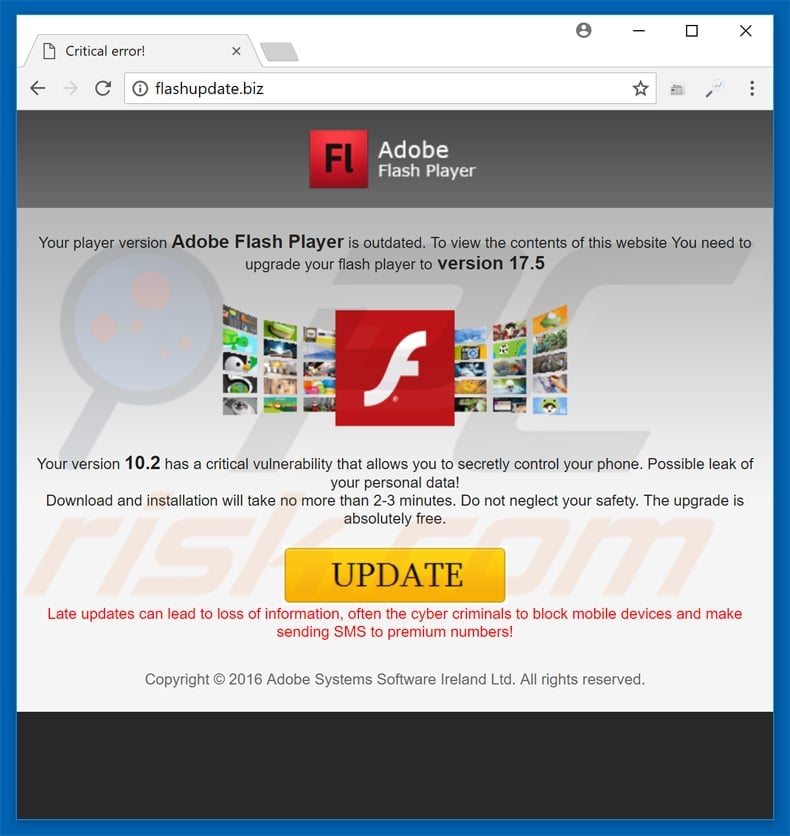
Flash Player Ocx Control 90 Is Not Installed
Load flash movies directly from any source (no temporary files!). Protect your flash movies. It is known fact that the Flash Player ActiveX is able to load movies at certain URLs only. You have to save the movie to a temporary location from your application's resource before you can load it. You'll have to generate a corresponding link that you can pass to the Flash Player ActiveX and then delete the movie after. You'll have to admit that this is extremely inconvenient.
Apart from being inconvenient there is a chance you'll fail when you try to create a temporary file if you don't have the appropriate permission or don't have access to a temporary folder. It is definitely not an appropriate approach when security is an issue since your movie can be easily intercepted.
There is a solution! F-IN-BOX uses a different approach of swflash.ocx/flash.ocx code loading. It is able to load your movies directly to the Macromedia / Adobe Flash Player ActiveX thereby avoiding the temporary file step. The advantages are pretty obvious.
Netscape Plugin Application Programming Interface (NPAPI) is a deprecated (see below). It is no longer needed with the release of a redesigned Java Runtime. Support came via a small ActiveX control (named 'plugin.ocx') that acted as a. It would again support the NPAPI Flash Player on Linux and keep releasing.
And you can also protect your movies from unauthorized access using your favourite software protection application. Using the control you can load any flash movie from memory directly. Just use the FPCM_LOADMOVIEFROMMEMORY and FPCM_PUTMOVIEFROMMEMORY messages.
Besplatne igre za dzojstik games online 2017. Swap adjacent tiles to make rows of at least 3 same-colored tiles to get the rare jewels and remove them from the field. Bigger combinations will give you special jewels and bonus points. Have an adventurous journey and hunt the precious jewels in this classic Match3 game for every age. Treasures of Montezuma 2 Chase down the trail of Montezuma and discover the power of the mysterious statues.
No temporary files! Load any movie on-the-fly from any supported source.
For example, you can put one or more flash movies in the resource section of your application and then load it from the exe! That's the portability and power of F-IN-BOX! Here's an example of how to load a flash movie from a resource. Create flash-enabled applications which are ready to work even when the Macromedia / Adobe Flash Player ActiveX is not installed! One of the biggest problem using the Flash Player ActiveX is the mandatory component registration.
The common approach is to save swflash.ocx/flash.ocx code to temporary files and then register them. The disadvantages are the same as above mentioned - insufficient permissions to save and register an swflash.ocx/flash.ocx. Now you can forget about these problems! F-IN-BOX is able to use swflash.ocx/flash.ocx from any source.
For example, you can put an swflash.ocx/flash.ocx code inside of your application's resources and instruct F-IN-BOX to use it. It is important to note that F-IN-BOX does not use temporary files and swflash.ocx/flash.ocx registration but loads and uses the code directly. No more user management rights problems - no more temporary files and no more component registrations.

It is up to you to decide what swflash.ocx/flash.ocx to use - by default already registered component is used. Traditionally, there are many obstacles or annoyances that one will encounter when using Macromedia / Adobe Flash Player ActiveX in an application.
The Application. • needs swflash.ocx/flash.ocx installed in the system before it will work. • has to work flawlessly with the already installed version of the Macromedia / Adobe Flash Player ActiveX. • has no easy way to prevent flash movies from being abused. F-IN-BOX to the rescue.
It solves these problems and more! By default, the component will use the swflash.ocx/flash.ocx that's already installed on the system.
The component can alternatively use any swflash.ocx/flash.ocx that you would like to provide it with using any supported source. An example of this how you can embed the flash.ocx into the resource section of your application's exe file and then load it at runtime.